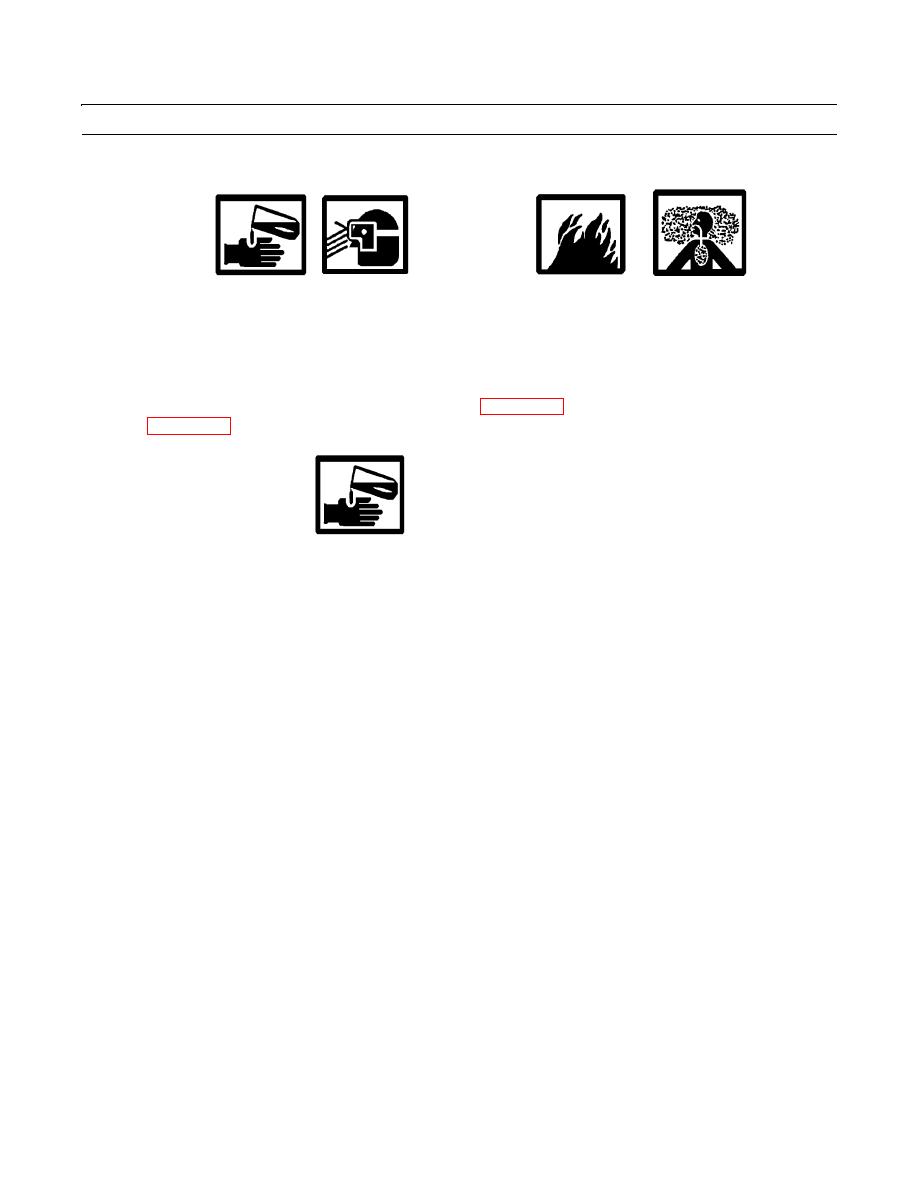
TM 10-3930-641-10
PREVENTIVE MAINTENANCE CHECKS AND SERVICES (PMCS) INTRODUCTION - CONTINUED
0011 00
GENERAL PMCS PROCEDURES - CONTINUED
WARNING
Solvent cleaning compound MIL-PRF-680 Type III is an environmentally compliant and low toxic material.
However, it may be irritating to the eyes and skin. Use protective gloves and goggles. Use in well-ventilated
areas. Keep away from open flames and other sources of ignition. Failure to do so may cause injury or death
to personnel.
a.
Keep It Clean. Dirt, grease, oil, and debris get in the way and may cover up a serious problem. Clean as you work
and as needed. Use solvent cleaning compound (Item 2, WP 0016 00) on all metal surfaces. Use detergent (Item 4,
WARNING
When servicing this machine, performing maintenance or disposing of materials such as engine coolant,
hydraulic oil, lubricants, battery acids, or batteries, and CARC paint, consult your unit/local hazardous
waste disposal center or safety office for local regulatory guidance. If further information is needed, please
contact The Army Environmental Hotline at 1-800-872-3845. Failure to follow this warning may result in
injury to personnel.
b.
Hazardous Waste Disposal. Ensure all spills are cleaned up and disposed of in accordance with local policy and
ordinances.
c.
Rust and Corrosion. Check metal parts for rust and corrosion. If any bare metal or corrosion exists, report it to
your supervisor.
d.
Bolts, Nuts, and Screws. Check bolts, nuts, and screws for obvious looseness and missing, bent or broken condi-
tion. You can't try them all with a tool, but look for chipped paint, bare metal, or rust around bolt heads. If you find
one you think is loose, tighten it or report it to your supervisor.
e.
Welds. Look for loose or chipped paint, rust or gaps where parts are welded together. If you find a bad weld, report
it to your supervisor.
f.
Electric Wires and Connectors. Look for cracked or broken insulation, bare wires, and loose or broken connec-
tors. Tighten loose connectors and ensure that the wires are in good condition.
g.
Hoses and Fluid Lines. Look for wear, damage, and signs of leaks. Ensure that clamps and fittings are tight. Wet
spots indicate leaks, but a stain around a fitting or connector can also mean a leak. If a leak comes from a loose fit-
ting or connector, tighten it. If something is broken or worn out, report it to your supervisor.
h.
Fluid Leakage. It is necessary for you to know how fluid leakage affects the status of your machine. The follow-
ing are definitions of the types/classes of leakage you need to know to be able to determine the status of your
machine. Learn and be familiar with them, and remember - when in doubt, notify your supervisor.
0011 00-2

